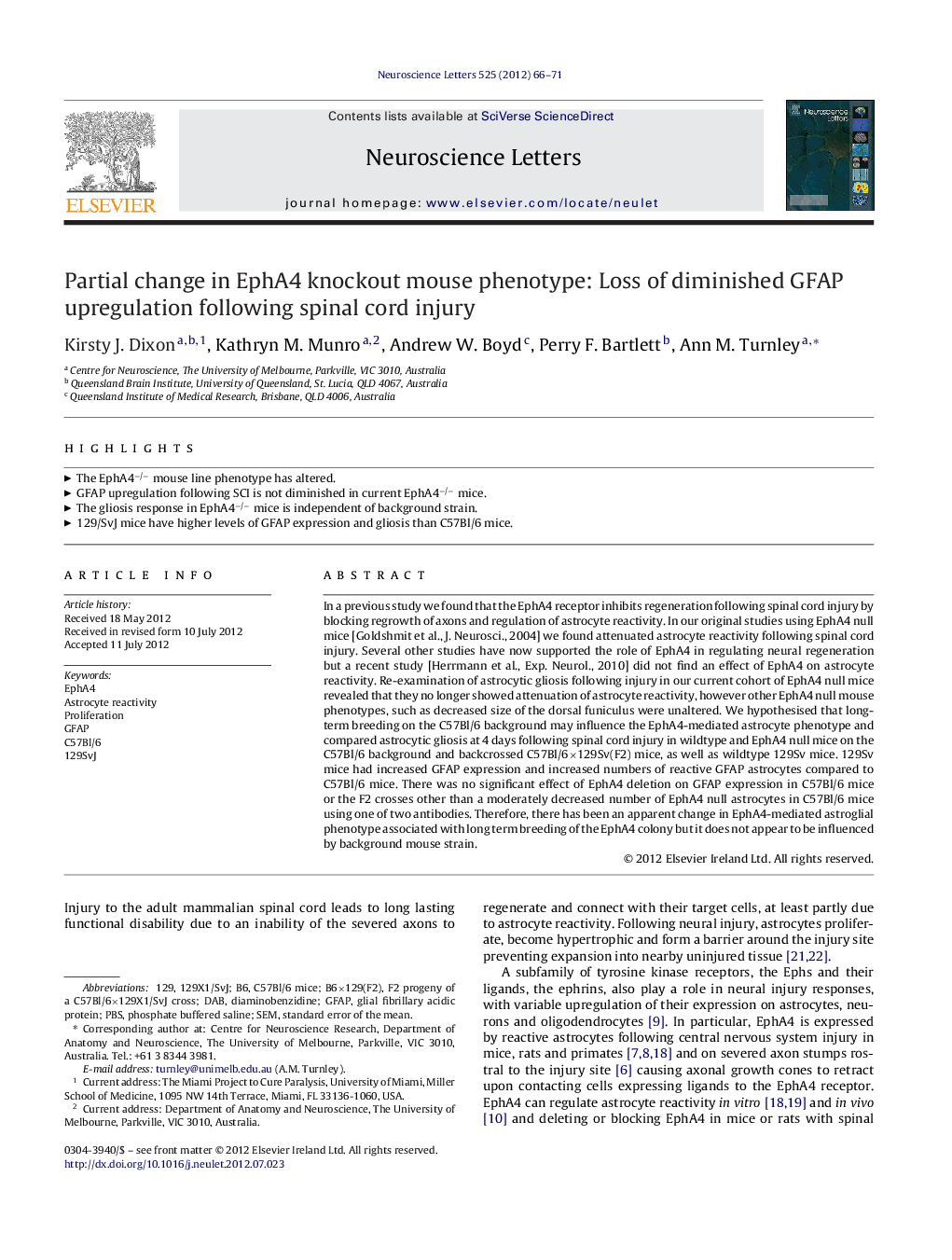| Article ID | Journal | Published Year | Pages | File Type |
|---|---|---|---|---|
| 6283921 | Neuroscience Letters | 2012 | 6 Pages |
In a previous study we found that the EphA4 receptor inhibits regeneration following spinal cord injury by blocking regrowth of axons and regulation of astrocyte reactivity. In our original studies using EphA4 null mice [Goldshmit et al., J. Neurosci., 2004] we found attenuated astrocyte reactivity following spinal cord injury. Several other studies have now supported the role of EphA4 in regulating neural regeneration but a recent study [Herrmann et al., Exp. Neurol., 2010] did not find an effect of EphA4 on astrocyte reactivity. Re-examination of astrocytic gliosis following injury in our current cohort of EphA4 null mice revealed that they no longer showed attenuation of astrocyte reactivity, however other EphA4 null mouse phenotypes, such as decreased size of the dorsal funiculus were unaltered. We hypothesised that long-term breeding on the C57Bl/6 background may influence the EphA4-mediated astrocyte phenotype and compared astrocytic gliosis at 4 days following spinal cord injury in wildtype and EphA4 null mice on the C57Bl/6 background and backcrossed C57Bl/6×129Sv(F2) mice, as well as wildtype 129Sv mice. 129Sv mice had increased GFAP expression and increased numbers of reactive GFAP astrocytes compared to C57Bl/6 mice. There was no significant effect of EphA4 deletion on GFAP expression in C57Bl/6 mice or the F2 crosses other than a moderately decreased number of EphA4 null astrocytes in C57Bl/6 mice using one of two antibodies. Therefore, there has been an apparent change in EphA4-mediated astroglial phenotype associated with long term breeding of the EphA4 colony but it does not appear to be influenced by background mouse strain.
► The EphA4−/− mouse line phenotype has altered. ► GFAP upregulation following SCI is not diminished in current EphA4−/− mice. ► The gliosis response in EphA4−/− mice is independent of background strain. ► 129/SvJ mice have higher levels of GFAP expression and gliosis than C57Bl/6 mice.
